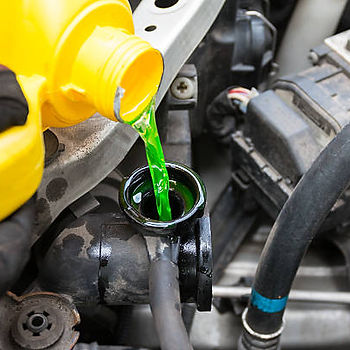Fluid Changes
Fluid Change Mt Hope, Ohio
Catering to the diverse fluid maintenance needs of vehicles, MT Service & Repair in Mt Hope, Ohio, offers comprehensive and professional fluid change services. Our team of technicians conducts meticulous inspections and expertly replaces vital fluids essential for your vehicle's performance and longevity. From routine oil changes, transmission fluid services, and brake fluid flushes to coolant system flushes, power steering fluid replacements, and differential fluid services. Ensuring optimal lubrication, smooth gear shifts, efficient braking, and reliable cooling, our commitment lies in providing tailored fluid change solutions that uphold your vehicle's reliability.
Routine Oil Changes
Regular oil changes, whether using conventional or synthetic oil, are vital for maintaining engine health, ensuring longevity, and sustaining optimal vehicle performance. Adjusting oil change intervals based on oil type, vehicle specifications, and driving conditions helps keep your vehicle running smoothly.
-
Regular Oil: Typically, every 3,000 to 5,000 miles or every 3 to 6 months is recommended for conventional or regular oil.
-
Synthetic Oil: Synthetic oil allows for longer intervals between changes, usually around 5,000 to 10,000 miles, depending on the vehicle and manufacturer recommendations.
Transmission Fluid Services
-
Fluid Inspection: Thorough examination of transmission fluid for quality, level, and signs of wear or contamination.
-
Fluid Flush and Replacement: Complete removal of old transmission fluid and replacement with fresh, high-quality fluid to ensure proper lubrication and smooth gear shifts.
-
Filter Replacement: If applicable, replacement of transmission filters to prevent debris and contaminants from circulating within the transmission system.
-
Seal and Gasket Checks: Inspection of seals and gaskets to ensure they are intact and prevent potential leaks.
-
Diagnostic Scans: Utilization of advanced diagnostic tools to identify any transmission-related issues or irregularities.
Typically, it's advised to replace transmission fluid every 30,000 to 60,000 miles, or every 2 to 4 years, for conventional automatic transmissions. Some newer vehicles equipped with modern transmission systems might have longer intervals, up to 100,000 miles.
Brake Fluid Flushes
-
Fluid Inspection: Thorough examination of brake fluid quality, level, and potential contaminants.
-
Fluid Flush and Replacement: Complete removal of old brake fluid and replenishment with fresh, high-quality fluid to maintain proper hydraulic pressure and optimal brake function.
-
System Bleeding: Removal of air bubbles from the brake lines to ensure consistent brake pedal feel and efficient braking.
-
Seal and Hose Inspection: Checking seals and hoses for any signs of wear or potential leaks that could compromise braking performance.
-
Performance Testing: Conducting brake tests post-flush to verify the braking system's responsiveness and effectiveness.
Brake fluid flushes should generally be performed approximately every 30,000 miles or every 2 to 3 years, depending on the vehicle and driving conditions. However, it's essential to consult your vehicle's owner's manual or manufacturer's recommendations for specific guidelines tailored to your car's requirements.
Coolant System Flushes
-
Coolant Inspection: Comprehensive assessment of coolant quality, level, and condition.
-
System Flushing: Complete removal of old coolant and debris, followed by the addition of fresh, high-quality coolant to maintain the engine's temperature and prevent overheating.
-
Pressure Testing: Verifying the system's pressure and integrity to detect any leaks or weaknesses that could compromise cooling efficiency.
-
Thermostat Check: Inspection of the thermostat to ensure proper functionality and regulation of coolant flow.
-
Radiator and Hose Examination: Checking radiators and hoses for any signs of corrosion, leaks, or blockages that could hinder coolant flow.
Typically, a coolant system flush is recommended every 2 to 5 years, or every 30,000 to 50,000 miles, depending on the vehicle manufacturer's guidelines and the type of coolant used.
Power Steering Fluid Replacements
-
Fluid Inspection: Thorough assessment of power steering fluid quality, level, and potential contaminants.
-
Fluid Drain and Replacement: Complete removal of old power steering fluid and replenishment with fresh, high-quality fluid to ensure proper lubrication and smooth steering operation.
-
System Bleeding: Elimination of air bubbles from the power steering system to maintain consistent steering responsiveness.
-
Hose and Seal Checks: Examination of hoses and seals for any signs of wear or potential leaks that could affect steering efficiency.
-
Performance Testing: Conducting steering tests post-fluid replacement to verify the system's smooth operation and responsiveness.
It's generally recommended to replace power steering fluid every 30,000 to 60,000 miles. However, this interval can vary depending on the vehicle model and manufacturer's guidelines.
Differential Fluid Services for Optimal Drivetrain Performance
-
Fluid Inspection: Thorough assessment of differential fluid quality, level, and potential contaminants.
-
Fluid Drain and Replacement: Complete removal of old differential fluid and replenishment with fresh, high-quality fluid to provide proper lubrication and reduce friction.
-
Seal Examination: Checking seals for wear or damage to prevent potential leaks that could affect differential performance.
-
Gasket Inspection: Verifying gasket integrity to prevent fluid leakage from the differential.
-
Performance Evaluation: Conducting checks to ensure the differential operates smoothly and effectively post-fluid replacement.
Typically, it's suggested to replace differential fluid every 30,000 to 50,000 miles or every 2 to 5 years. However, it's crucial to refer to your vehicle's owner's manual or manufacturer's recommendations for specific intervals.

